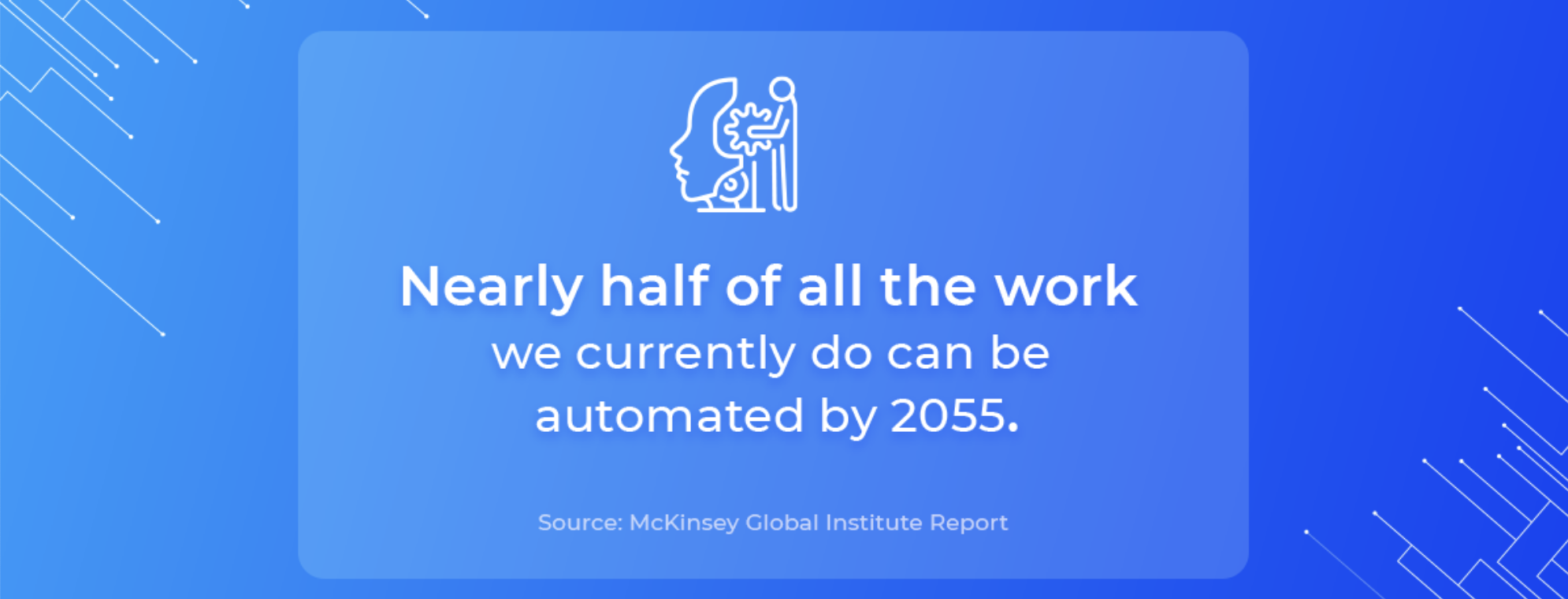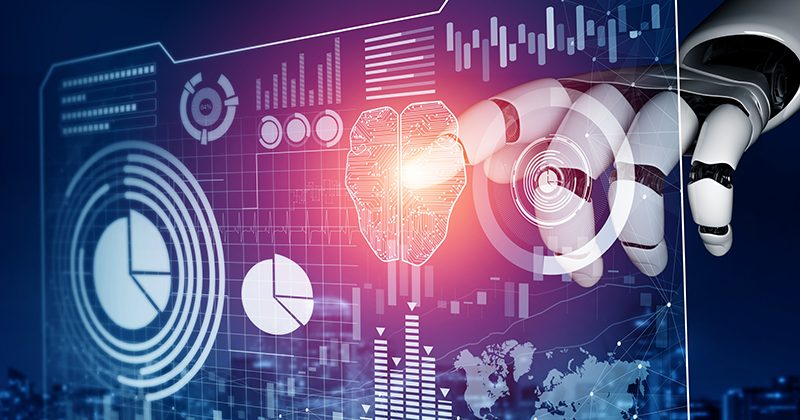How To Automate Document Classification And Make Your Business More Efficient
Automation isn’t here to steal your job. More likely, a range of solutions will take on the mundane, freeing you up to focus on what’s important. One McKinsey study suggests that 60% of occupations could free nearly a third of their time if employees started using the appropriate software. Which begs the question: what tasks […] Artykuł How To Automate Document Classification And Make Your Business More Efficient pochodzi z serwisu DLabs.AI.

Automation isn’t here to steal your job. More likely, a range of solutions will take on the mundane, freeing you up to focus on what’s important.
One McKinsey study suggests that 60% of occupations could free nearly a third of their time if employees started using the appropriate software. Which begs the question: what tasks could you automate with the right technology?
Lead generation and paperwork approval are two areas with proven solutions, while optical character recognition software is transforming how businesses approach document classification.
— ‘Optical… what?’ we hear you ask.
Well, there’s no better place to kick off today’s article, so let’s start there.
What Is Optical Character Recognition?
Optical Character Recognition (OCR, for short) is software that converts images of written or printed text into machine-encoded files.
Say you have a handwritten tax return that you want in a digital format. OCR can port the text from the document to a computer screen without any manual work. But the software also works in other contexts.
The image recognition capabilities can extract data from photos, printed records, passports, bank statements, invoices, business cards, even subtitles from a screenshot of video content. In truth, the sky’s the limit.
And the technique is remarkably accurate: one DLabs.AI project achieved a 94% error-free rate using a dedicated OCR system.
Now, several clients are integrating OCR solutions — because they are:
Simple To Manage
Once an OCR system has scanned a document, anyone with access to a database can see it. That’s why banks use OCR to make records, like customer tax histories, visible to employees.
Easy To Edit
Digitized documents aren’t static. You can edit them like a Word doc using a built-in processor. And accountants often use this process to amend self-assessment tax forms.
Quick To Search
Scanned files are convertible into machine-readable formats (txt, doc, pdf), meaning you can find terms by searching for keywords, which authorities use to check names on a list.
Highly Secure
OCR not only helps you digitize paper documents. It lets you store sensitive data in a secure location. And that’s why financial advisors often use it to manage client records.
***
But as we said, OCR can serve all sorts of purposes.
We’ve used it on projects to enable automated document classification (as well as invoice classification): manual tasks that take time, are prone to human error — and that, frankly, a machine can do better.
But ‘What is document classification?’ And ‘How does it work?’ These are two questions we’ll tackle next.
What Is Document Classification?
Document classification is the process of arranging documents in classes or categories so that a person or company knows how to handle them.
A customer services team might use document classification to ensure incoming support tickets go to the right individual. An accounting firm might use invoice classification to assign expenses to the correct department.
Now, you can do this manually.
But that would mean an individual — or an entire team — running through pages of text to label the elements with the appropriate tag. And as you can imagine, this process at scale would be time-consuming, error-prone, and expensive.
That’s why organizations turn to AI-based document classification, using a combination of OCR, machine learning, and natural language processing to auto-sort documents into predefined categories.
Just remember: AI-based document classification works as well with Tweets as it does with invoices or news articles, so feel free to deploy it wherever you see fit.
To see it in action, watch the video below.
5 Benefits Of Document Classification In Business
No matter your industry, document classification brings five core benefits. Let’s delve into each one:
1. Classify Any Content
Use your system for document classification, invoice classification, or to label content across channels. The software is dynamic. It can help everyone from accountants to marketers to social media managers and beyond.
2. Fewer Manual Errors
Any manual process is prone to human error. An employee chasing a deadline might misinterpret a detail in the rush, pushing an invoice into the wrong expenses bucket. And while one small error might cause little more than a headache…
Repeated mistakes can cause a migraine when you’re working at scale.
3. Higher Consistency
Not only is human error potentially costly, it’s also entirely random, which makes it hard to account for — or correct.
On the other hand, automated document classification produces a highly consistent output. Meaning you’ll learn how accurate your system is and, when you spot a mistake, you can optimize the software to improve the results.
4. Higher Throughput
Even if you find an employee who can classify documents at the same rate as your software, people eventually have to sleep. But a computer never sleeps. On the contrary, it can process an infinite backlog of documents as quickly as possible.
5. More Time For Work
Finally, while essential, classification tasks create limited value — whereas if you free your team to focus on productive tasks that move your business forward, you’ll see efficiencies fly.
…and who doesn’t want that  Read More
Read More




















































%20Abstract%20Background%20112024%20SOURCE%20Amazon.jpg)






















































































































![[The AI Show Episode 142]: ChatGPT’s New Image Generator, Studio Ghibli Craze and Backlash, Gemini 2.5, OpenAI Academy, 4o Updates, Vibe Marketing & xAI Acquires X](https://www.marketingaiinstitute.com/hubfs/ep%20142%20cover.png)
























































































































































































































































-Nintendo-Switch-2-–-Overview-trailer-00-00-10.png?width=1920&height=1920&fit=bounds&quality=80&format=jpg&auto=webp#)





















_Anna_Berkut_Alamy.jpg?#)













































































































![YouTube Announces New Creation Tools for Shorts [Video]](https://www.iclarified.com/images/news/96923/96923/96923-640.jpg)





































































![[Weekly funding roundup March 29-April 4] Steady-state VC inflow pre-empts Trump tariff impact](https://images.yourstory.com/cs/2/220356402d6d11e9aa979329348d4c3e/WeeklyFundingRoundupNewLogo1-1739546168054.jpg)






























































